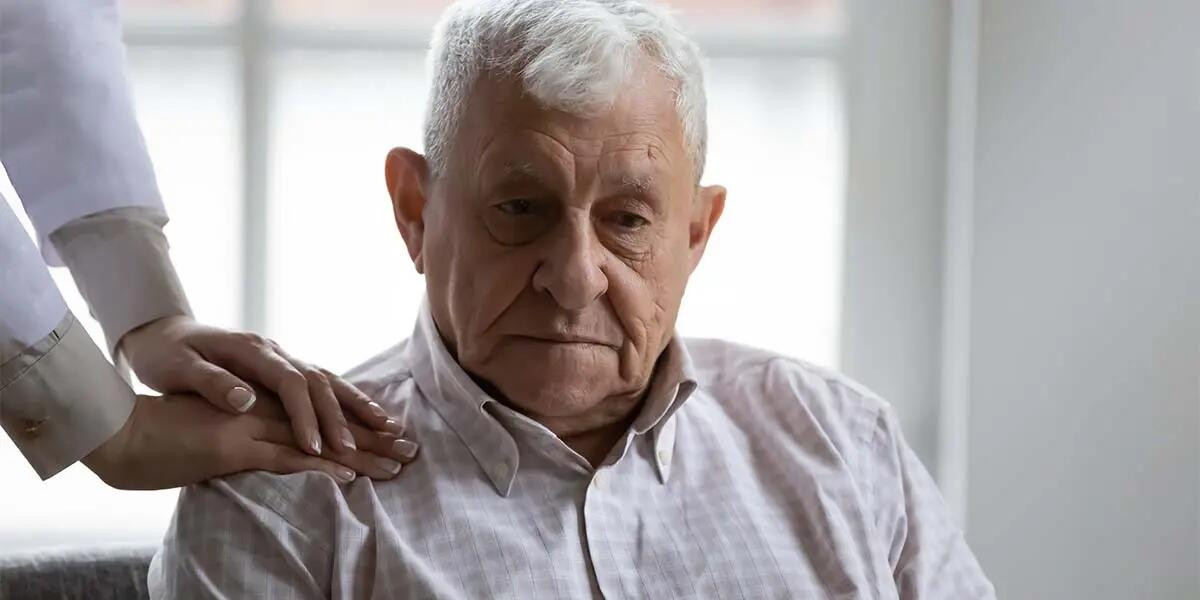7 Things to Know About BPSD

More than 90% of patients who have dementia have or will develop at least one of the behavioral and psychological symptoms of dementia (BPSD), according to the Alzheimer’s Association. These include “a range of neuropsychiatric disturbances such as agitation, aggression, depression, and apathy,” explain Cloak and Khalli. In turn, BPSD have a “significant impact on prognosis, institutionalization, and caregiver well-being,” they comment. If you are working in long-term care, here are seven things to know about BPSD.
BPSD fall into five domains:
- Cognitive/perceptual, e.g., delusions, hallucinations
- Motor, e.g., pacing, wandering, repetitive movements, physical aggression
- Verbal, e.g., yelling, calling out, repetitive speech, verbal aggression
- Emotional, e.g., euphoria, depression, apathy, anxiety, irritability
- Vegetative, e.g., disturbances in sleep and appetite.
Medications can play a role.
“Patients with dementia are susceptible to the CNS effects of medications, and not all culprit medications are easily recognized,” according to Cloak and Khalli. They recommend that BPSD assessment include a review of any changes in medications prior to onset of BPSD. Steven Posar, MD & CEO of GuideStar Eldercare points out the value of consulting the AGS Beers Criteria® published by the American Geriatrics Society. AGS lists nearly 100 medications or medication classes to avoid or use with caution for some or all older adults. It is easy to overlook neurobehavioral effects.
Comfort can be a factor.
About half of patients with dementia also experience pain, but they may not self-report, say Cloak and Khalli. In assessment of BPSD, a clinician can review the medical history for clues, such as neuropathy, osteoarthritis, or peripheral vascular disease. Staff can also be alert to non-verbal signs of pain, such as grimacing, clenched jaw, flinching, or other signals. The Pain Assessment in Advanced Dementia Scale is a reliable tool for both verbal and nonverbal dementia residents. Constipation or urinary retention may also aggravate symptoms, say Cloak and Khalli.
Documentation & analysis can provide clues.
Documentation should be as specific as possible, suggest Cloak and Khalli. “Caregivers should be prompted to describe what they are seeing, rather than use generic terms such as ‘agitation.’” Onset, frequency, and timing of BPSD may help with assessment and management. A qualified psychologist may also use one or more validated tools for evaluating and documenting dementia symptoms. (Read more about why you need a psychologist on your dementia care team.)
Neuropsychiatric evaluation is essential.
The clinicians at GuideStar Eldercare emphasize the crucial importance of accurate diagnosis. Without an understanding of underlying pathology, it is unrealistic to create viable treatment plans for the gamut of BPSD. A successful, integrated approach requires expertise in neurology, psychiatry, and psychology, along with general medicine. Causes and dynamics can be complex and highly individual. Rigorous assessment sometimes reveals underlying conditions that can be managed more effectively.
Caregiver training can sometimes help.
Cloak and Khalli conclude that caregiver training is “effective in both reducing a range of BPSD.” A common strategy is to learn to recognize and address unmet needs; another is to create soothing environments with appropriate levels of stimulation. Communication plays a key role as well. In one study, researchers found that a training program called “Bathing without a Battle” was successful in reducing agitation, bathing time, and psychotic use.
Antipsychotics must be managed.
Antipsychotic drugs are often used for BPSD and are sometimes valuable. However, they are often overused in nursing homes, according to industry reporting. CMS calls for controls of antipsychotic drug regimens and gradual dose reduction. (Learn more about reducing polypharmacy in dementia care.)
Addressing the complex needs of long-term care facilities, the GuideStar Eldercare Long-Term Care Antipsychotic Stewardship™ program breaks the paradigm of antipsychotic overuse. Instead, it helps facilities safely reduce their antipsychotic usage rates and addresses polypharmacy, while supporting their regulatory and documentation compliance.
As presented to AAIC in 2022, “implementation of a shared cooperative clinical protocol between the SNF facility staff and clinical treatment team resulted in a reduction of antipsychotic use of more than 65% with no noted harms nor clinical decline.” For support in managing BPSD and reducing polypharmacy, feel free to contact us. Our pioneering integrated care teams can help you advance patient-centered care.
